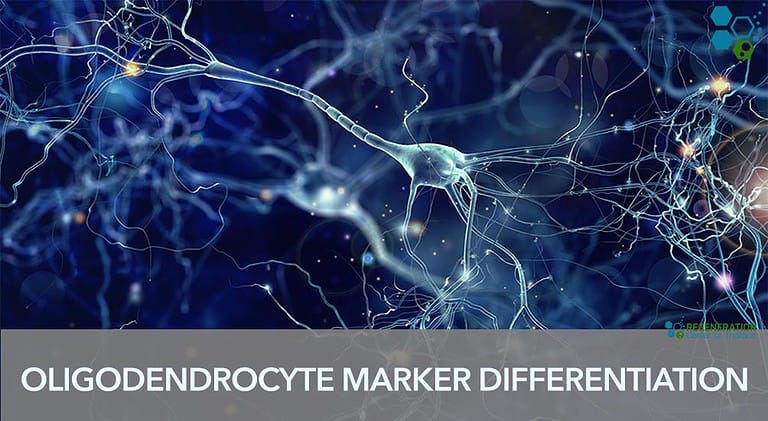
Oligodendrocytes are particular useful types of cell for treatment in conditions such as ataxia,brain injuries,ALS,motor neuron disease and spinal cord damage.
[1] Oligodendrocytes are also helpful for neural function in that it provides insulation through the myelin sheath.
For instance, in our treatments of autoimmune diseases like multiple sclerosis, considerable damage in the myelin sheath may be damaged, which exposes the neural cell underneath and impairs nerve signal transmission. [2]
Oligodendrocytes are the myelin-producing cells of the central nervous system (CNS). These cells play a critical role in neural signal transmission and overall CNS function. Myelination by oligodendrocytes increases the speed at which electrical signals travel along neurons, allowing for efficient neural communication. Differentiation of oligodendrocyte progenitor cells (OPCs) into mature oligodendrocytes and subsequent myelination is a complex process that is regulated by a combination of intrinsic and extrinsic factors. This process can be tracked and studied using various markers at different stages of differentiation.
After differentiation, oligodendrocytes start the process of myelination, where they extend processes that wrap around the axons of neurons. These wraps consist of multiple layers of membrane rich in lipids, forming the myelin sheath. This myelin sheath acts as an insulator, which facilitates the rapid conduction of electrical impulses along the axon.
Several factors influence the myelination process:
Research in oligodendrocyte biology aims to understand the mechanisms underlying differentiation and myelination and to identify therapeutic targets for demyelinating diseases.
[1] ^ Mosebach, Jennifer, Gerburg Keilhoff, Tomasz Gos, Kolja Schiltz, Linda Schoeneck, Henrik Dobrowolny, Christian Mawrin, et al. 2013. Increased nuclear Olig1-expression in the pregenual anterior cingulate white matter of patients with major depression: a regenerative attempt to compensate oligodendrocyte loss? Journal of psychiatric research, no. 8 (April 21). doi:10.1016/j.jpsychires.2013.03.018. https://www.ncbi.nlm.nih.gov/pubmed/23615187
[2] ^ Pérez, María Julia, Natalia Fernandez, and Juana María Pasquini. 2013. Oligodendrocyte differentiation and signaling after transferrin internalization: a mechanism of action. Experimental neurology (June 21). doi:10.1016/j.expneurol.2013.06.014. https://www.ncbi.nlm.nih.gov/pubmed/23797152
If you've seen people take ice baths or cold showers and wondered if they're onto… Read More
Immunomodulation stands at the forefront of biomedical research, steering the immune system's ability to fight… Read More
Stem cell research leads the charge in medical innovation, heralding revolutionary advances in regenerative medicine.… Read More
The blood-brain barrier (BBB) is a crucial shield for the brain, regulating the entry of… Read More
While peptide bonds are fundamental to protein structure, their direct relationship with stem cells lies… Read More
When discussing cutting-edge cancer treatments, NK cell therapy stands out due to its unique approach… Read More